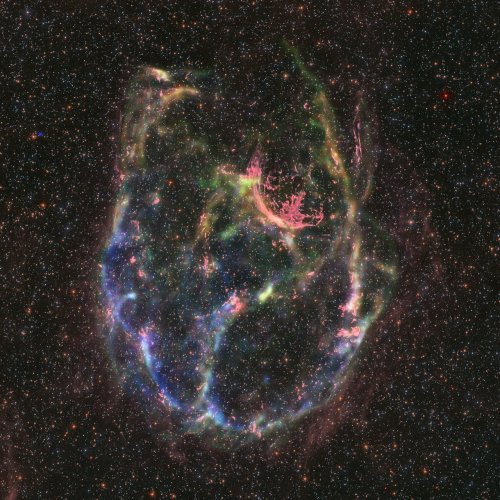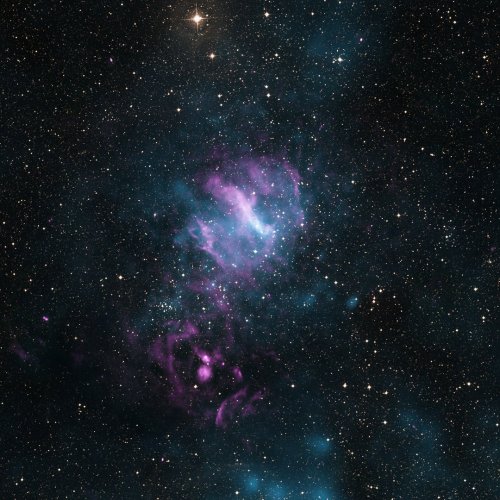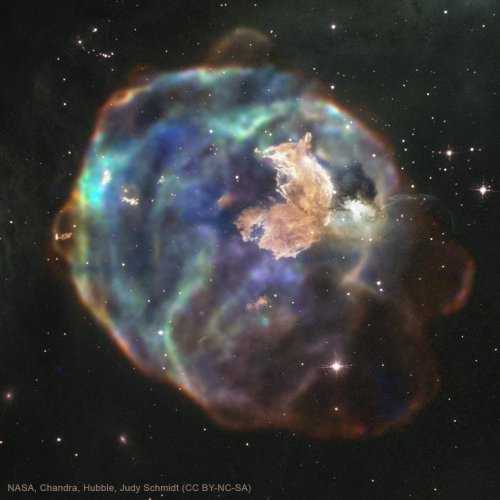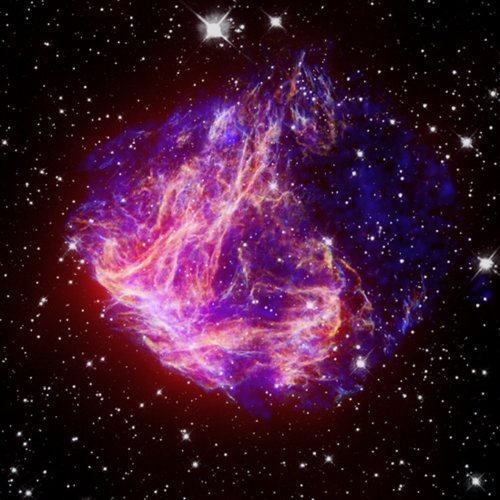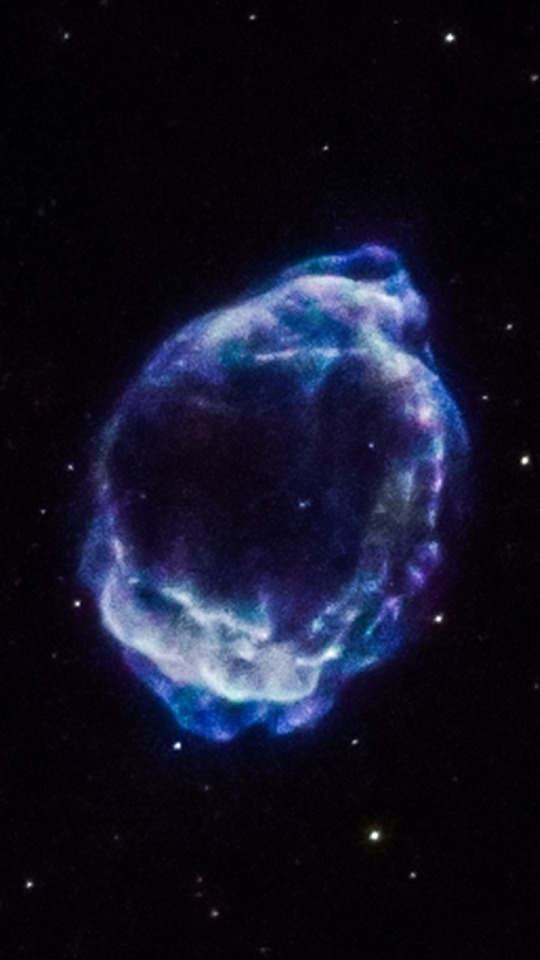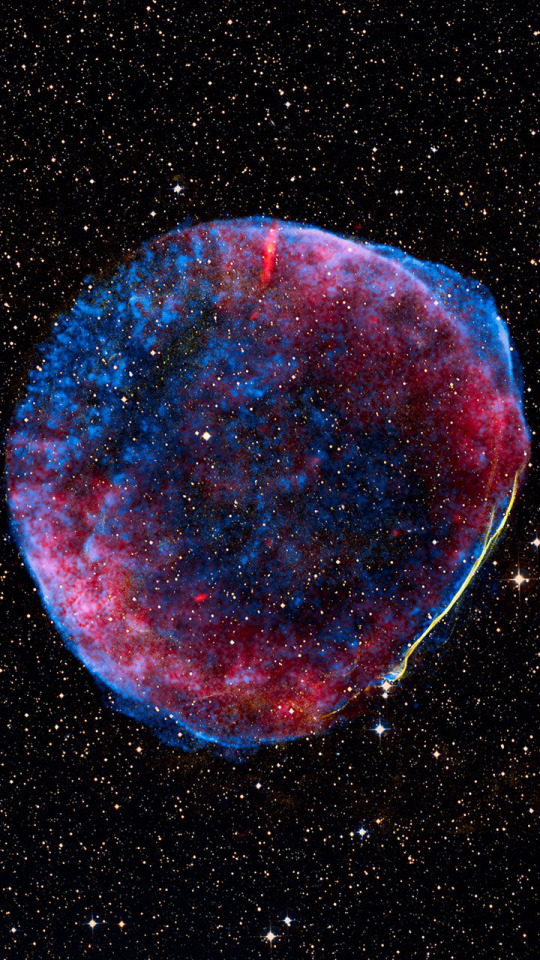Your Writing Will Always Feel Awkward To You, Because You Wrote It.
Your writing will always feel awkward to you, because you wrote it.
Your plot twists will always feel predictable, because you created them.
Your stories will always feel a bit boring to you, because you read them a million times.
They won't feel like that for your reader.
More Posts from Donutdomain and Others
You Are Made of Stardust
Though the billions of people on Earth may come from different areas, we share a common heritage: we are all made of stardust! From the carbon in our DNA to the calcium in our bones, nearly all of the elements in our bodies were forged in the fiery hearts and death throes of stars.
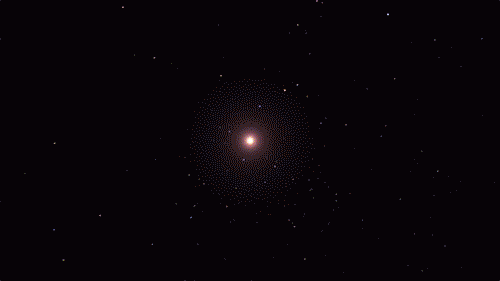
The building blocks for humans, and even our planet, wouldn’t exist if it weren’t for stars. If we could rewind the universe back almost to the very beginning, we would just see a sea of hydrogen, helium, and a tiny bit of lithium.
The first generation of stars formed from this material. There’s so much heat and pressure in a star’s core that they can fuse atoms together, forming new elements. Our DNA is made up of carbon, hydrogen, oxygen, nitrogen, and phosphorus. All those elements (except hydrogen, which has existed since shortly after the big bang) are made by stars and released into the cosmos when the stars die.

Each star comes with a limited fuel supply. When a medium-mass star runs out of fuel, it will swell up and shrug off its outer layers. Only a small, hot core called a white dwarf is left behind. The star’s cast-off debris includes elements like carbon and nitrogen. It expands out into the cosmos, possibly destined to be recycled into later generations of stars and planets. New life may be born from the ashes of stars.
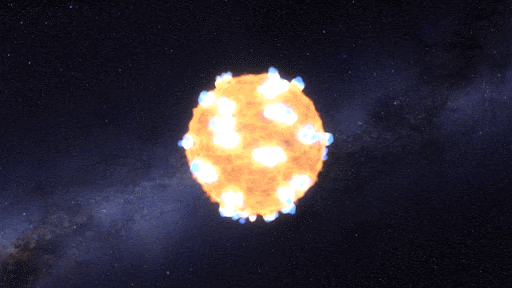
Massive stars are doomed to a more violent fate. For most of their lives, stars are balanced between the outward pressure created by nuclear fusion and the inward pull of gravity. When a massive star runs out of fuel and its nuclear processes die down, it completely throws the star out of balance. The result? An explosion!
Supernova explosions create such intense conditions that even more elements can form. The oxygen we breathe and essential minerals like magnesium and potassium are flung into space by these supernovas.
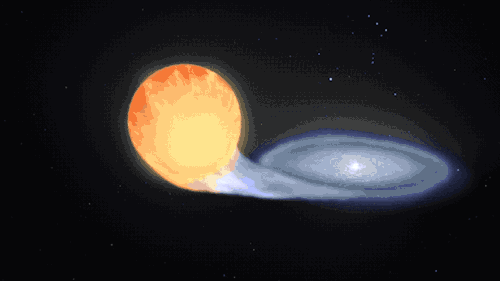
Supernovas can also occur another way in binary, or double-star, systems. When a white dwarf steals material from its companion, it can throw everything off balance too and lead to another kind of cataclysmic supernova. Our Nancy Grace Roman Space Telescope will study these stellar explosions to figure out what’s speeding up the universe’s expansion.
This kind of explosion creates calcium – the mineral we need most in our bodies – and trace minerals that we only need a little of, like zinc and manganese. It also produces iron, which is found in our blood and also makes up the bulk of our planet’s mass!

A supernova will either leave behind a black hole or a neutron star – the superdense core of an exploded star. When two neutron stars collide, it showers the cosmos in elements like silver, gold, iodine, uranium, and plutonium.

Some elements only come from stars indirectly. Cosmic rays are nuclei (the central parts of atoms) that have been boosted to high speed by the most energetic events in the universe. When they collide with atoms, the impact can break them apart, forming simpler elements. That’s how we get boron and beryllium – from breaking star-made atoms into smaller ones.
Half a dozen other elements are created by radioactive decay. Some elements are radioactive, which means their nuclei are unstable. They naturally break down to form simpler elements by emitting radiation and particles. That’s how we get elements like radium. The rest are made by humans in labs by slamming atoms of lighter elements together at super high speeds to form heavier ones. We can fuse together elements made by stars to create exotic, short-lived elements like seaborgium and einsteinium.
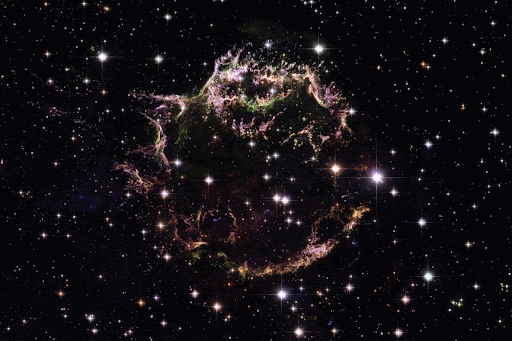
From some of the most cataclysmic events in the cosmos comes all of the beauty we see here on Earth. Life, and even our planet, wouldn’t have formed without them! But we still have lots of questions about these stellar factories.
In 2006, our Stardust spacecraft returned to Earth containing tiny particles of interstellar dust that originated in distant stars, light-years away – the first star dust to ever be collected from space and returned for study. You can help us identify and study the composition of these tiny, elusive particles through our Stardust@Home Citizen Science project.
Our upcoming Roman Space Telescope will help us learn more about how elements were created and distributed throughout galaxies, all while exploring many other cosmic questions. Learn more about the exciting science this mission will investigate on Twitter and Facebook.
Make sure to follow us on Tumblr for your regular dose of space!
Random Fact #3,062
The wind on Neptune can blow at speeds of 2,000 km/hour.

The winds causing the Great Dark Spot specifically have been measured to be around 1,127 km/hour.



HiPOD 22 Apr 2022: Layers to the West of Gale Crater
The objective of this observation is to examine thin layers in the Nepenthes Mensae region. Because this location is close to Gale Crater, these layers may one day be compared to those currently being studied by the Curiosity rover. This scene was also imaged by the Context Camera onboard MRO.
Nepenthes Mensae is a plateau, whose name derives from Greek for a drug that quells all sorrows with forgetfulness. “Nepenthe” literally means “without grief” (ne = not, penthos = grief) and was a potion given to Helen by an Egyptian queen in Homer’s “Odyssey.”
Enhanced color image is less than 1 km across; black and white is less than 5 km.
ID: ESP_055565_1750 date: 4 June 2018 altitude: 265 km
NASA/JPL-Caltech/UArizona
An interesting fact I just learned about amethyst! It is a light-sensitive crystal, so if you keep it in direct light, the color can fade. So if you want to preserve the pigment of your amethyst, make sure to keep it out of direct lighting ☀️💜





I wasn’t happy with the painting explanation I threw together the other day and I keep thinking of steps/important notes I should have included, so I made this more detailed version today! This is more or less how I paint, and the main things I keep in mind when I paint. Originally I was just going to “add a few more details” to the original tutorial, but I kept thinking of stuff and went a little bit nuts trying to phrase everything in a way that makes sense.
there are many incredible tutorials about digital (and traditional) painting, color theory, light and shadow, etc out there– I want to urge anyone interested in learning more about this stuff to go seek out professional advice! Painting is really, really complicated, and I’m absolutely still learning how it works and how to do it good. This is just m’thoughts and some images to go with them.
I'm currently working on an animatic, could you give me any advice?
1.

2.

3.

4.

5.

I still haven’t taken any animation or storyboarding classes, but these are general TECHNICAL tips I’ve learned online and through trying to fix my own boards. Definitely practice with things your passionate about/interested as it’ll make the process so much more fun (: for me the technical parts aren't the hardest, moreso actually visualizing and deciding the scenes mentally, which takes practice.
Also 6 cuz yeee:

I had a classmate laugh cuz I said I used wmm for my boards and he thought he needed a fancy $7 blue pencil LIKE NO BRO JUST USE WHAT YOU HAVE IF YOU CAN’T AFFORD THINGS LOLLLL. I have a small huion screen now, but it’s down to preference cuz honestly I prefer paper over digital 0′;
Good luck though! Once I take classes or if I have more tips id gladly share them with yall (:
-
 whatastupidnameyounobody reblogged this · 1 month ago
whatastupidnameyounobody reblogged this · 1 month ago -
 lucentshorty liked this · 1 month ago
lucentshorty liked this · 1 month ago -
 newdawnhorizon reblogged this · 1 month ago
newdawnhorizon reblogged this · 1 month ago -
 movieexpert1978 liked this · 2 months ago
movieexpert1978 liked this · 2 months ago -
 profoundlyconfusedbeing liked this · 2 months ago
profoundlyconfusedbeing liked this · 2 months ago -
 mrcube11 liked this · 2 months ago
mrcube11 liked this · 2 months ago -
 uchihasakatsuki reblogged this · 2 months ago
uchihasakatsuki reblogged this · 2 months ago -
 putmeinablenderpls liked this · 2 months ago
putmeinablenderpls liked this · 2 months ago -
 flowerprincesscherryblossom reblogged this · 3 months ago
flowerprincesscherryblossom reblogged this · 3 months ago -
 rita-roquette liked this · 3 months ago
rita-roquette liked this · 3 months ago -
 cnth-rb liked this · 3 months ago
cnth-rb liked this · 3 months ago -
 mean-and-serene liked this · 3 months ago
mean-and-serene liked this · 3 months ago -
 michiru-kun liked this · 3 months ago
michiru-kun liked this · 3 months ago -
 jesters-reblogs reblogged this · 3 months ago
jesters-reblogs reblogged this · 3 months ago -
 eclipsed-jester liked this · 3 months ago
eclipsed-jester liked this · 3 months ago -
 furiousstudentcopscissors-blog liked this · 3 months ago
furiousstudentcopscissors-blog liked this · 3 months ago -
 pixiestickers reblogged this · 3 months ago
pixiestickers reblogged this · 3 months ago -
 cupid-club liked this · 3 months ago
cupid-club liked this · 3 months ago -
 bananannanass liked this · 3 months ago
bananannanass liked this · 3 months ago -
 thelonewolf48 reblogged this · 3 months ago
thelonewolf48 reblogged this · 3 months ago -
 theharknesscoven reblogged this · 3 months ago
theharknesscoven reblogged this · 3 months ago -
 what-is-canon liked this · 3 months ago
what-is-canon liked this · 3 months ago -
 mm-better-not reblogged this · 3 months ago
mm-better-not reblogged this · 3 months ago -
 mm-better-not liked this · 3 months ago
mm-better-not liked this · 3 months ago -
 hell-much reblogged this · 3 months ago
hell-much reblogged this · 3 months ago -
 notnowmandoline liked this · 3 months ago
notnowmandoline liked this · 3 months ago -
 awkwardlyafan liked this · 3 months ago
awkwardlyafan liked this · 3 months ago -
 winter-deerling reblogged this · 3 months ago
winter-deerling reblogged this · 3 months ago -
 winter-deerling liked this · 3 months ago
winter-deerling liked this · 3 months ago -
 tweenlove-n-hate reblogged this · 3 months ago
tweenlove-n-hate reblogged this · 3 months ago -
 tweenlove-n-hate liked this · 3 months ago
tweenlove-n-hate liked this · 3 months ago -
 direquail liked this · 3 months ago
direquail liked this · 3 months ago -
 sunlight-on-yourskin reblogged this · 3 months ago
sunlight-on-yourskin reblogged this · 3 months ago -
 sunlight-on-yourskin liked this · 3 months ago
sunlight-on-yourskin liked this · 3 months ago -
 caitylove reblogged this · 3 months ago
caitylove reblogged this · 3 months ago -
 caitylove liked this · 3 months ago
caitylove liked this · 3 months ago -
 femslashhistorian reblogged this · 3 months ago
femslashhistorian reblogged this · 3 months ago -
 uncannybob liked this · 3 months ago
uncannybob liked this · 3 months ago -
 wanderingmind867 liked this · 3 months ago
wanderingmind867 liked this · 3 months ago -
 blueribbonbaby liked this · 3 months ago
blueribbonbaby liked this · 3 months ago -
 prisealla liked this · 3 months ago
prisealla liked this · 3 months ago -
 seraphicsage reblogged this · 3 months ago
seraphicsage reblogged this · 3 months ago -
 seraphicsage liked this · 3 months ago
seraphicsage liked this · 3 months ago -
 ltwharfy reblogged this · 3 months ago
ltwharfy reblogged this · 3 months ago -
 ltwharfy liked this · 3 months ago
ltwharfy liked this · 3 months ago -
 darkrose517 liked this · 3 months ago
darkrose517 liked this · 3 months ago -
 1verre2trop-official liked this · 3 months ago
1verre2trop-official liked this · 3 months ago -
 fallinggravity678 reblogged this · 3 months ago
fallinggravity678 reblogged this · 3 months ago

I just reblog fun facts/tipsScience, nature, geology facts etc! + art & writing tips!
67 posts




